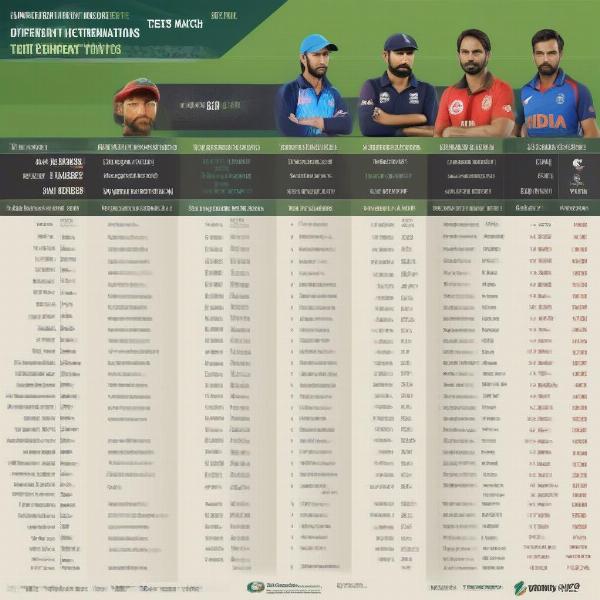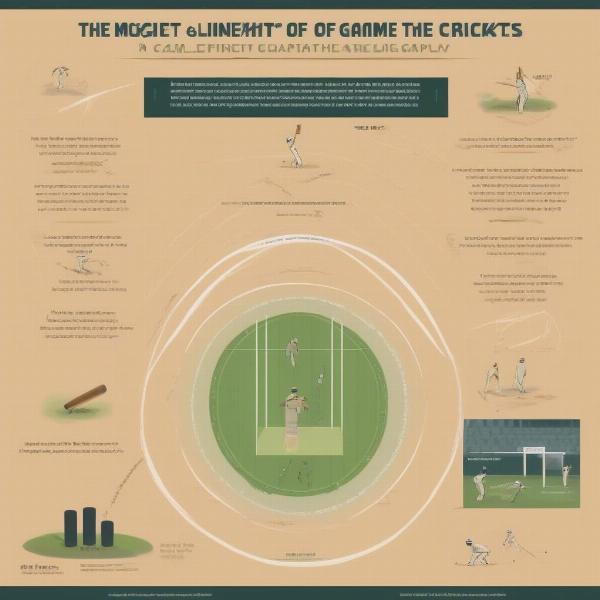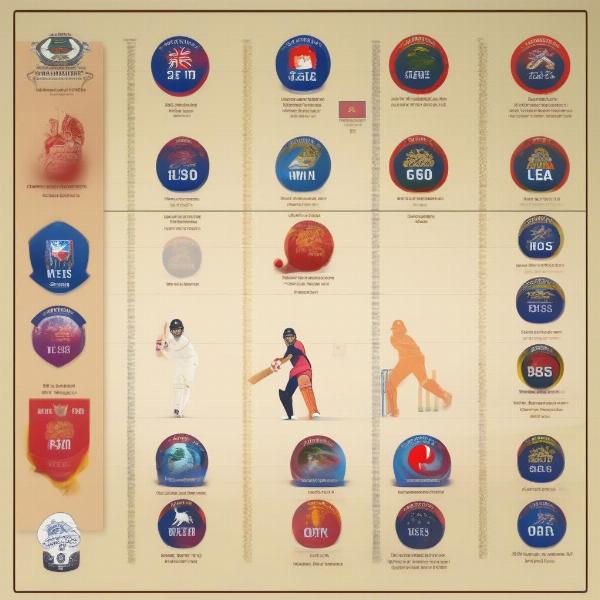Cricket, a sport renowned for its nuanced gameplay and strategic depth, often raises the question: just how long does a cricket game last? The answer, much like the game itself, isn’t always straightforward. Several factors influence a cricket match’s duration, from the format of the game to unforeseen weather interruptions. Let’s delve into the fascinating world of cricket timing and understand the different factors that contribute to a match’s length.
Decoding Cricket Match Durations: A Comprehensive Guide
Cricket, unlike many sports, boasts various formats, each with its own unique set of rules and time constraints. This variety contributes significantly to the diverse range of match lengths. Understanding these formats is key to answering the question of How Long Are Cricket Games.
Test Matches: The Marathon of Cricket
Test matches, considered the purest form of cricket, are played over five days, making them the longest format. Each day consists of roughly 90 overs, with each over comprising six legal deliveries bowled by a bowler. Theoretically, a maximum of 450 overs can be bowled in a Test match, though this rarely happens in practice due to factors like weather delays and slow over rates.
One Day Internationals (ODIs): A Balanced Affair
ODIs, as the name suggests, are designed to be completed within a single day. Each team bats for 50 overs, resulting in a total of 100 overs for the entire match. This format strikes a balance between the strategic depth of Test cricket and the faster pace of T20 cricket.
Twenty20 (T20) Cricket: The Sprint Format
T20 cricket, the newest and arguably the most popular format, is designed for fast-paced action. Each team bats for a maximum of 20 overs, resulting in a total of 40 overs for the match. This format is known for its explosive batting, aggressive bowling, and overall shorter game duration.
 Cricket Match Formats Comparison
Cricket Match Formats Comparison
Factors Influencing Cricket Game Lengths
While the format dictates the maximum allotted time, various other elements can affect the actual duration of a cricket match.
Weather Interruptions: The Unpredictable Factor
Cricket is an outdoor sport, making it susceptible to weather delays. Rain interruptions can significantly extend a match, sometimes even leading to abandoned games, especially in limited-overs formats.
Slow Over Rates: A Tactical Consideration
Teams can sometimes employ slow over rates as a tactical maneuver. However, penalties for slow over rates can result in reduced playing time or even forfeited matches in extreme cases.
Complexities of Gameplay: Adding to the Time
The intricate rules and regulations of cricket, such as reviews, discussions between umpires, and strategic timeouts, can contribute to the overall length of a game.
 Factors Affecting Cricket Game Length
Factors Affecting Cricket Game Length
How Long Does a Game of Cricket Last? Quick Answers
So, how long does a game of cricket last? Here’s a quick summary:
- Test Matches: Up to 5 days (approximately 7-8 hours per day).
- ODIs: Approximately 7-8 hours.
- T20s: Approximately 3-4 hours.
These are estimates, and actual match durations can vary depending on the factors mentioned earlier. For a deeper understanding, you can check out our article on how long does a game of cricket last.
Beyond the Basics: Other Cricket Formats
Apart from the main formats, other variations of cricket exist, each with its unique time frame. These include domestic T20 leagues, such as the Indian Premier League (IPL), and The Hundred, a 100-ball cricket competition.
The Hundred: A New Era of Fast-Paced Cricket
The Hundred, a relatively new format, aims to condense the excitement of cricket into an even shorter timeframe. Each team faces 100 balls, offering a fresh perspective on the game’s pacing.
 Different Cricket Formats Overview
Different Cricket Formats Overview
Conclusion: Embracing the Timelessness of Cricket
While the question “how long are cricket games?” doesn’t have a simple answer, understanding the different formats and influencing factors offers a deeper appreciation for this multifaceted sport. Whether it’s the strategic battles of Test matches or the explosive action of T20s, cricket’s varied formats cater to diverse preferences. So, next time you tune in to a cricket match, remember that the duration is just one aspect of the rich tapestry of this captivating game. Let’s celebrate the timelessness of cricket in all its forms! And be sure to check out our other articles for a deeper dive into the world of cricket.
FAQ
-
What is the shortest format of cricket? T20 cricket is the shortest format, with each team batting for a maximum of 20 overs.
-
How many overs are in a One Day International? Each team bats for 50 overs in an ODI.
-
Why are Test matches played over five days? The five-day format allows for a more strategic and nuanced approach to the game, testing the endurance and skill of players.
-
Can a cricket match be abandoned due to rain? Yes, especially in limited-overs formats, rain can lead to abandoned matches if the weather conditions prevent a sufficient amount of play.
-
What is a slow over rate in cricket? A slow over rate occurs when a team takes longer than the allocated time to bowl their overs. This can lead to penalties.
-
How does weather affect the length of a cricket match? Rain delays can significantly extend the duration of a cricket match, sometimes even leading to abandoned games.
-
Are there other formats of cricket besides Test matches, ODIs, and T20s? Yes, there are other variations like The Hundred and various domestic T20 leagues around the world.

